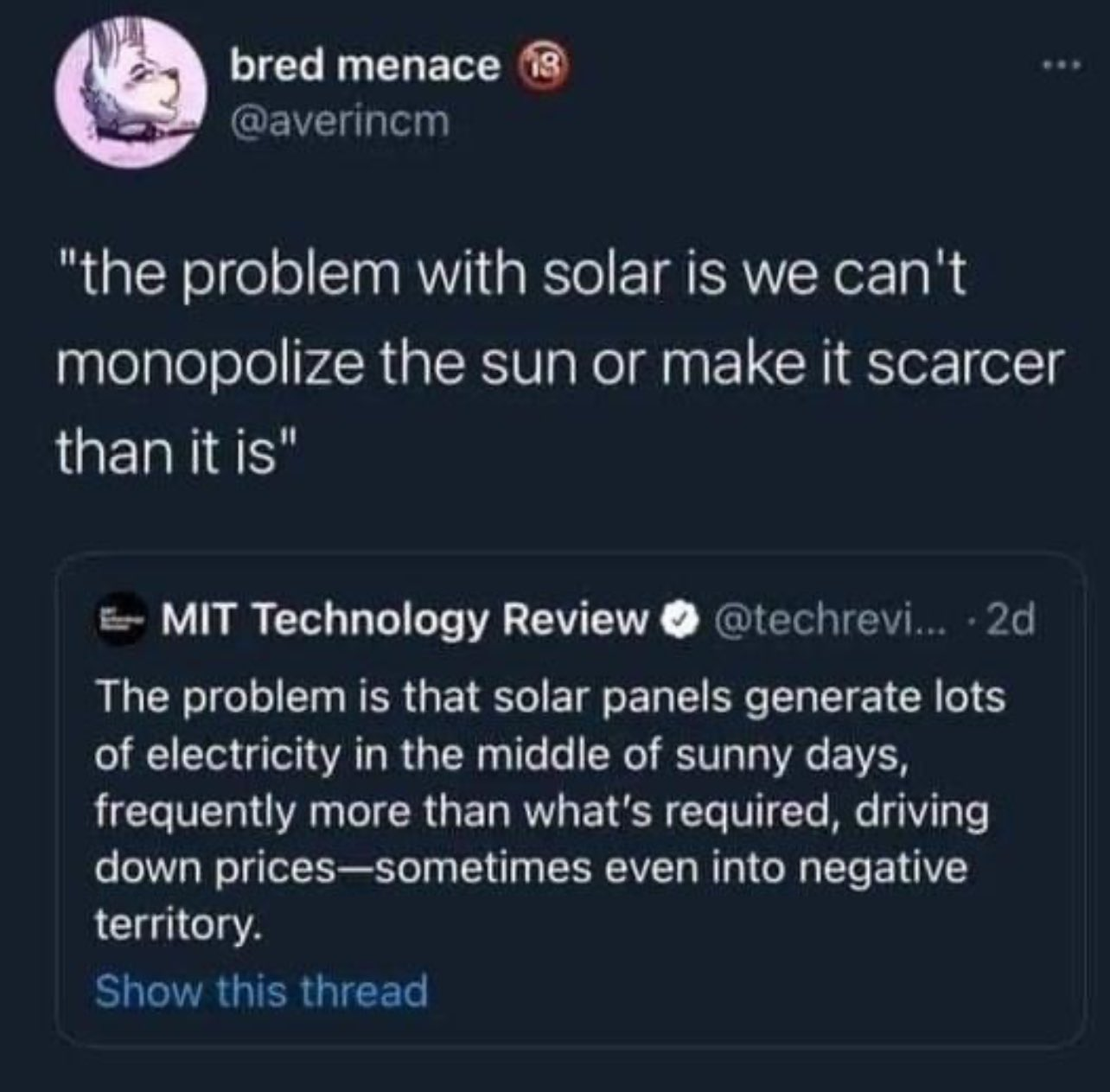this post was submitted on 02 Oct 2024
1690 points (95.6% liked)
Microblog Memes
5872 readers
5381 users here now
A place to share screenshots of Microblog posts, whether from Mastodon, tumblr, ~~Twitter~~ X, KBin, Threads or elsewhere.
Created as an evolution of White People Twitter and other tweet-capture subreddits.
Rules:
- Please put at least one word relevant to the post in the post title.
- Be nice.
- No advertising, brand promotion or guerilla marketing.
- Posters are encouraged to link to the toot or tweet etc in the description of posts.
Related communities:
founded 1 year ago
MODERATORS
you are viewing a single comment's thread
view the rest of the comments
view the rest of the comments

Speaking as a flashlight enthusiast...there's many different ways to get a constant and consistent current. Sure we'd need to scale it up from a pocket-sized device to a whole fucking power grid, but with a big enough driver with the right arrangement of capacitors and all that, you'd easily be able to get a totally consistent current out of wind or solar
Having knowledge in power electronics i can confidently say the DC output of solar is easily and regularly inverted in phase with grid. In fact, DC is often used for undersea cables switching AC to dc then back to AC, All at extremely high voltage and varying demand(up yo 600kV/600MW but varying by installation).
Wind turbines go online after the blades start spinning and connect to the grid in the same way as any other generator, controlled by internal electronics. Power is regulated through blade feathering and can be turned off as supply exceeds demand. This, other than for maintenance reasons, is why you might see one turbine spinning while the next is standing still. This capability actually means the grid is MORE stable with wind power.
Any further fluctuation is managed in the same way as conventional power generation.